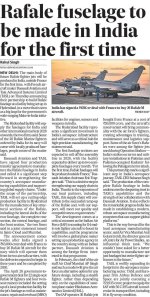The opposite.
Flying low is the safest. Flying high is the most impactful in terms of sensors.
To have more sensor impact from higher altitudes, they designed stealth.
Then networking bridged the gap via the sensor-shooter loop, so now we can use both high and low altitude with pretty much equal impact, and things depend significantly on the weapon used instead.
So if you fire from high altitude, then you don't need a powered weapon, but a glide bomb is sufficient, but you also increase risk to the pilot due to high exposure. And if you fire from low altitude, you need a powered weapon, but at decreased risk to the pilot. For standoff, while higher altitudes provide longer range, it's largely irrelevant because the quality of the weapon can bridge that gap.
So, if a SAM is 250 km away, a 500 km-capable BM like Rampage can kill it from either low altitude or high altitude. Alternatively if you use a VLO missile, like the new Ice breaker, then you can send that towards a SAM from high altitude.
The benefit of low altitude is you give the SAM less time to react with the ability to move in closer. So a missile will be visible only from tens of kms away, so it gives you only a few minutes to react. A Hammer fired from 10 km away gives the SAM only 50 seconds to react.
The only difference is glide bombs are cheaper than powered weapons. And with stealth you can get closer to get more information on the ground from higher altitudes. So now the question is which is better, a stealth platform that's also firing the weapon, like the F-35, or a networked stealth drone that can go even closer to support the low flying Jaguar with better information.



 . And with that, we're moving closer towards my dream of Tata/TAS becoming the Lockheed-Martin of India. Now just waiting for them to become production partners for LCA MK2 & AMCA.
. And with that, we're moving closer towards my dream of Tata/TAS becoming the Lockheed-Martin of India. Now just waiting for them to become production partners for LCA MK2 & AMCA.